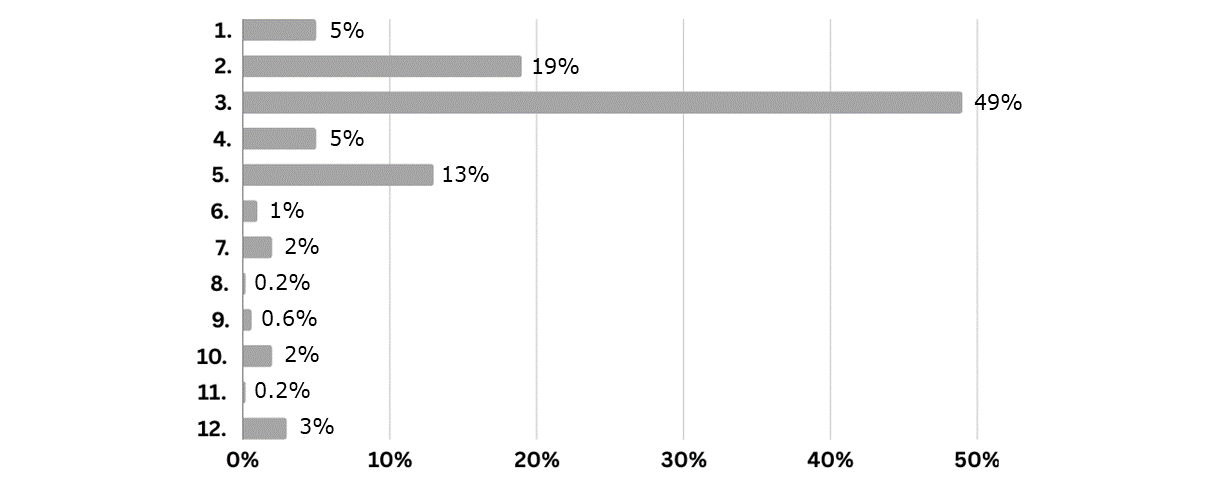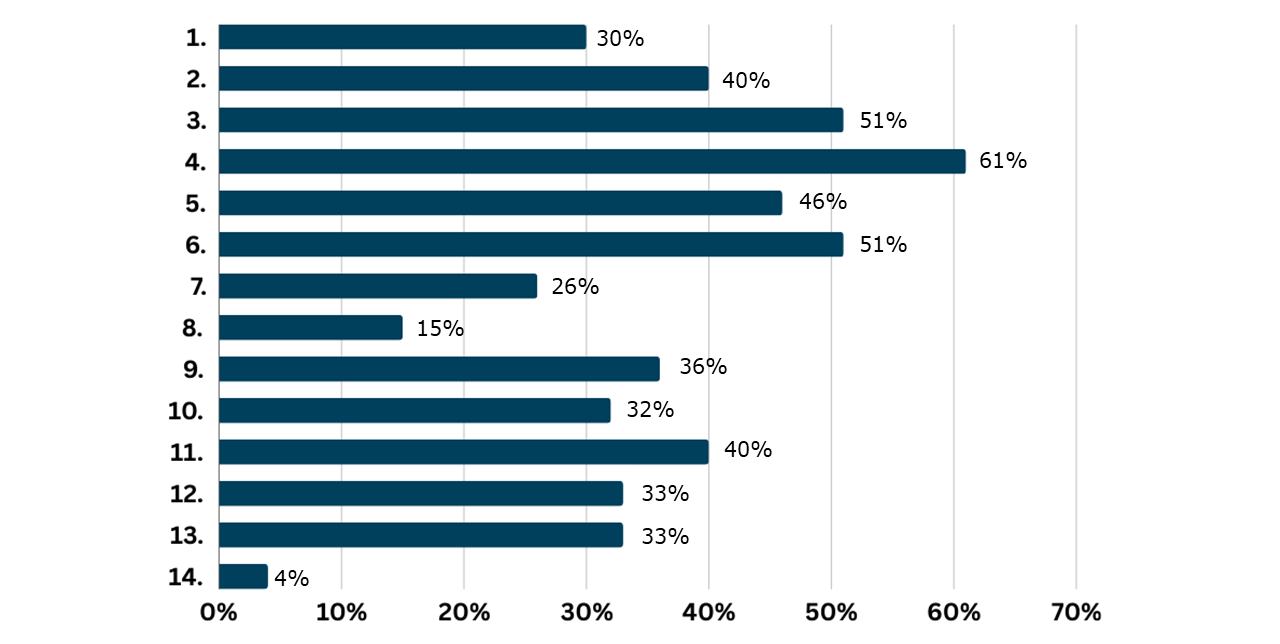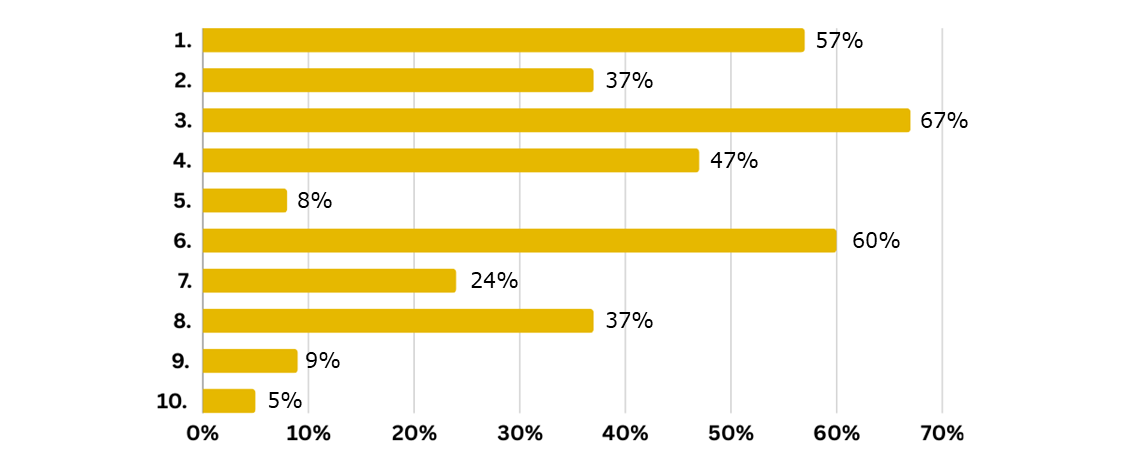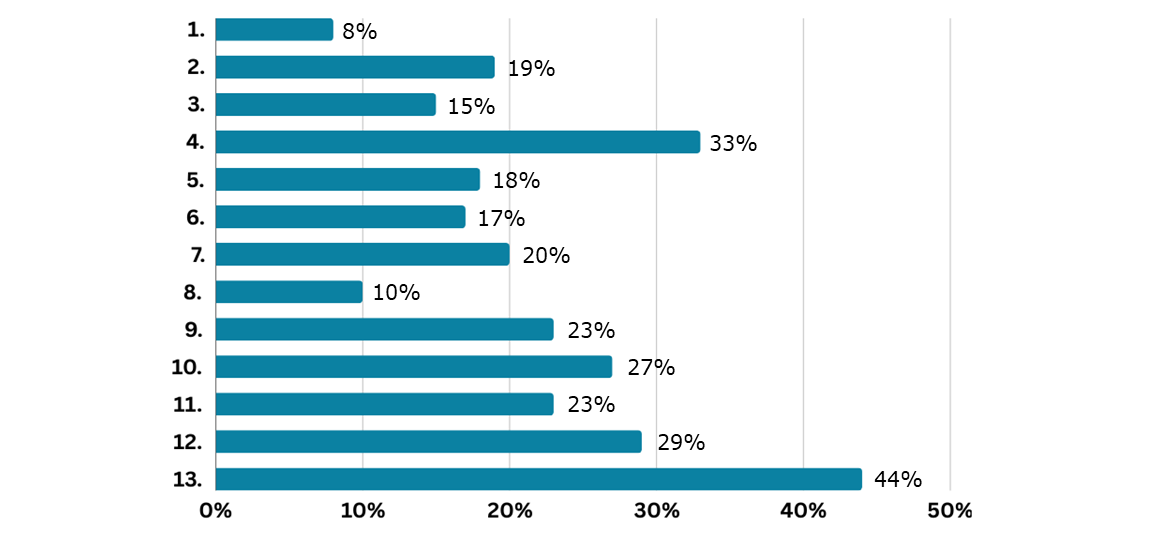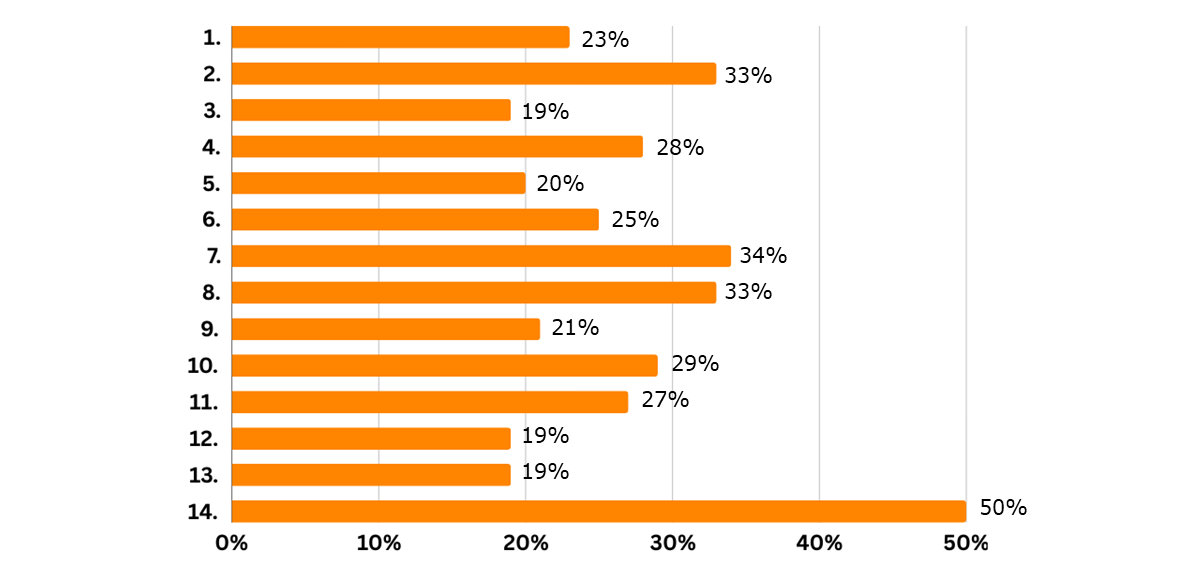Survey on promoting mental and physical health in schools - Results
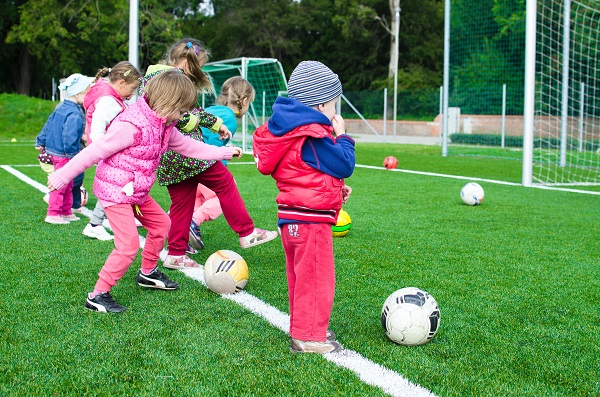
In today's complex and ever-changing world, the well-being of pupils is paramount. To recognise the importance of nurturing the development of the whole person, schools are increasingly focusing on promoting pupils’ mental and physical health.
Mental health encompasses emotional well-being, resilience and the ability to cope with challenges. Schools can play a vital role in nurturing pupils' and teachers’ mental health by implementing whole-school approaches, addressing all aspects impacting well-being: teaching, learning and assessment practices; school climate and partnership with the family and the broader community, etc.
Also, schools are looking at ways to make their school buildings and grounds greener to support well-being and ensure that sustainability is not just taught but also practised at school. Physical health is equally crucial for pupils' overall well-being. Schools can encourage healthy lifestyles through nutritious meals and creating conducive environments for regular exercise.
The survey gathered 666 responses, most of which came from Italy, Greece, Portugal, Spain and Türkiye from teachers working in secondary and primary education.
Which of the following best describes your role?
- Teacher – early childhood education and care
- Teacher – primary education
- Teacher – secondary education
- Teacher – vocational education
- School head
- National, regional, or local authority
- Teacher educator
- Education policymaker
- Parent
- In-school support staff (e.g., school librarian, career counsellor)
- External practitioner (visiting schools)
- Other educational professional/stakeholder
1 - To what extent do the following statements apply to your school or a school you know?
83% of participants confirmed that their school shows sensitivity towards the mental health and overall well-being of pupils, and that it is committed to promoting their physical health (82%). However, although 64% recognised that their school has a holistic approach to young people's development, only 53% of respondents indicated that the school adequately cares for its educators. Similarly, 57% of participants agreed that their schools promote green and sustainable learning environments.
A=Strongly agree / B=Agree / C=Disagree / D=Strongly disagree / E=I don’t know/Not applicable
- The school promotes physical health.
- The school is sensitive to pupils’ mental health and well-being.
- The school has a holistic approach to young people’s development.
- The school cares for teachers’ well-being.
- The school promotes green and sustainable learning environments (e.g. buildings, classrooms, canteens).
2 - Thinking of your school or a school you know, which of the following does the school provide for pupils to support mental health and well-being?
The most frequent school practices supporting the mental health and well-being of pupils include anti-bullying actions (61%), providing targeted support to individuals facing mental health challenges (51%) and offering creative and/or physical activities to foster emotional well-being (51%). However, the involvement of pupils in decision making (33%) and the provision of space and time for expressing concerns (33%) attracted fewer responses. The relatively lower percentages for providing designated private spaces (15%) and implementing peer support programmes (26%) suggest that these are areas that require attention.
- General mental health literacy within curriculum lessons or other compulsory sessions
- Green indoor and outdoor areas to learn about and connect with the natural environment
- Targeted support to individuals with mental health or well-being difficulties
- Anti-bullying actions
- Social and emotional skills development within curriculum lessons
- Creative and/or physical activities to support emotional well-being
- A peer support programme, e.g. a buddy programme for newcomers
- A designated private space or room (e.g. for coping with frustration, meditation)
- A designated in-school mental health specialist
- An external mental health specialist (e.g. psychologist, counsellor, social worker)
- A multi-disciplinary team of specialists and teachers
- Space and time for pupils to express concerns (within and outside curricular activities)
- Active involvement of pupils in school decision making
- None of these
3 - Thinking of your school or a school you know, which of the following does the school provide to develop pupils’ physical health?
According to respondents, the most common school practices supporting pupils’ physical health are the provision of physical fitness and sports activities (67%), granting access to sports facilities or equipment (60%) and incorporating general physical health education within the curriculum (57%). Furthermore, 47% of respondents indicated that their school emphasises nutrition education and healthy eating initiatives, and 37% stated that schools have a designated in-school physical health specialist and offer individualised support.
- General physical health education within curriculum lessons or other compulsory sessions
- Provision to support individuals with physical health or well-being difficulties
- Physical fitness and sports activities to promote physical well-being
- Nutrition education and healthy and sustainable eating initiatives
- A peer support programme focused on physical health goals
- Access to sports facilities or equipment for physical activity
- A designated private indoor or outdoor space for physical exercise or relaxation
- A designated in-school physical health specialist (e.g. physical education teacher or school nurse)
- An external physical health specialist (e.g. physiotherapist, nutritionist, sport coach)
- None of the above
4 - Which are the most effective means of combining physical and mental health in school?
The most effective means for combining physical and mental health in schools are creating a positive and inclusive school culture (44%), offering outdoor activities and nature walks (33%) and involving parents and families in supporting well-being (29%). Allowing pupils to voice their concerns and participate in school decisions (27%), providing teacher training on physical and mental health (23%) and promoting creative activities (23%) are also recognised as valuable approaches. Less frequently cited strategies for fostering physical and mental health include mindfulness and meditation techniques (19%), group projects (18%) and holistic health and wellness programmes (17%), among some other measures.
- Physical activity breaks in class
- Teaching mindfulness and meditation techniques
- Physical education classes focusing on mental health
- Outdoor activities and nature walks
- Group projects and teamwork
- Holistic health and wellness programmes
- Creating green and sustainable activities and spaces
- Assessment of social and emotional learning and physical and mental well-being
- Promoting creative activities
- Opportunities for pupils to voice their concerns and take part in decisions concerning school life
- Teacher training on physical and mental health
- Involving parents and families in supporting well-being
- Creating a positive and inclusive school culture
5 - Who should be the main people responsible for well-being support in school?
A significant 72% of participants believe that teachers and school staff should play a central role in fostering pupils’ well-being, followed by parents and families (59% of respondents) and school counsellors and other mental health professionals (53%). School administrators, the pupil support services team, external health professionals, pupils themselves and community health organisations were ranked lower.
- Teachers and school staff
- School counsellors or mental health professionals
- School administration
- Pupils
- Parents and families
- Community health organisations
- External health professionals or specialists
- Pupil support services team
6 - What actions should be implemented to better promote well-being support in school?
To better promote well-being support in school, respondents primarily acknowledged staff well-being as a top priority (50%) alongside training teachers in mental health awareness and identification (34%). Implementing mental health education, working with multi-disciplinary teams and anti-bullying measures are also essential components, each receiving significant attention from respondents. Nevertheless, offering social and emotional learning opportunities within curricula, promoting healthy eating habits and raising general awareness of support attracted fewer responses.
- Access to physical activity: more inclusive opportunities for exercise and sports
- Mental health education, including coping skills and self-care
- Social and emotional learning opportunities within curricula
- Linking with nature, sustainability and the environment (e.g. green playgrounds)
- Peer support programmes: fostering a sense of community and connection among pupils
- Designated spaces for relaxation: quiet areas for meditation or stress relief
- Training teachers in mental health awareness, identification and support
- Multi-disciplinary teams to address the specific needs of struggling pupils
- Collaboration with external specialists: bringing in experts like counsellors or nutritionists
- Anti-bullying measures: a safe and inclusive environment for all
- Opportunities for pupils to voice their concerns and take part in decisions concerning school life
- Promoting healthy eating habits through school meals or informing parents
- General awareness of support: ensure pupils know where to seek help
- Staff well-being: support teachers' own mental and physical health
Discussion
The results show that a number of initiatives are needed to reinforce well-being support in schools. While there is a general acknowledgment of schools' efforts to foster the mental and physical health of pupils, the data highlights several areas that need attention and improvement.
Teachers need more support, with only about half of respondents feeling that their schools adequately care for teachers’ well-being. There is strong support for actions to support it. Therefore, investing in mental health awareness and identification training programmes for teachers is key and will help ensure that educators have the skills to address pupils’ diverse mental health needs. Anti-bullying actions, targeted support for mental health challenges, and creative activities for emotional well-being are already common practices. However, areas like pupil involvement in decision-making processes and designated private spaces need more focus.
By addressing these areas using a whole-school approach, schools can develop a supportive educational environment that promotes the holistic well-being of both pupils and staff, laying the foundation for a healthier and more resilient future generation.
Further reading
Additional information
-
Education type:Early Childhood Education and CareSchool Education
-
Target audience:TeacherStudent TeacherHead Teacher / PrincipalSchool PsychologistTeacher EducatorGovernment staff / policy makerParent / Guardian
-
Target audience ISCED:Early childhood education (ISCED 0)Primary education (ISCED 1)Lower secondary education (ISCED 2)Upper secondary education (ISCED 3)

